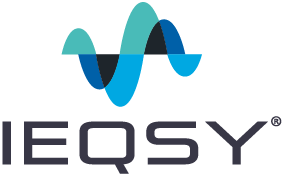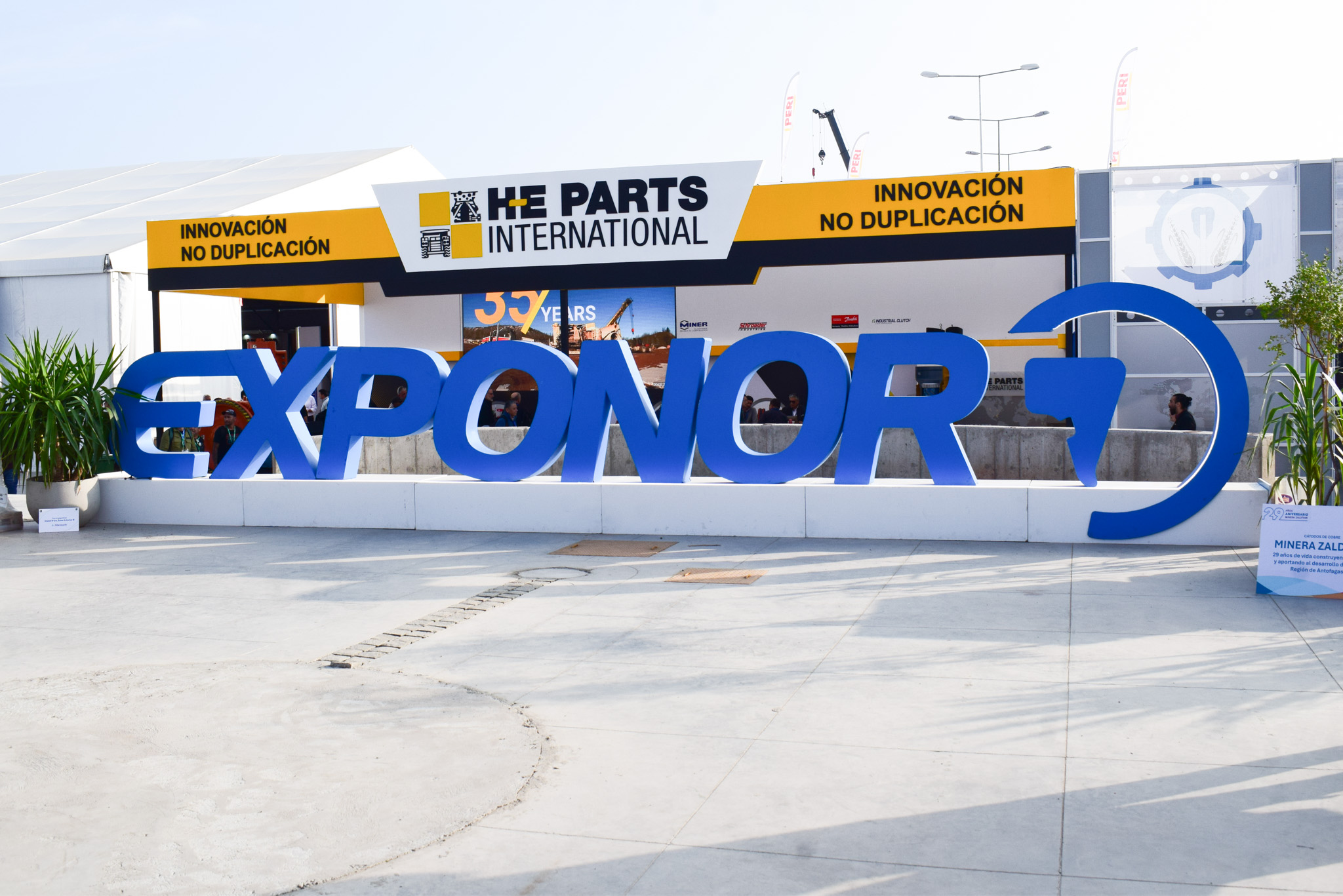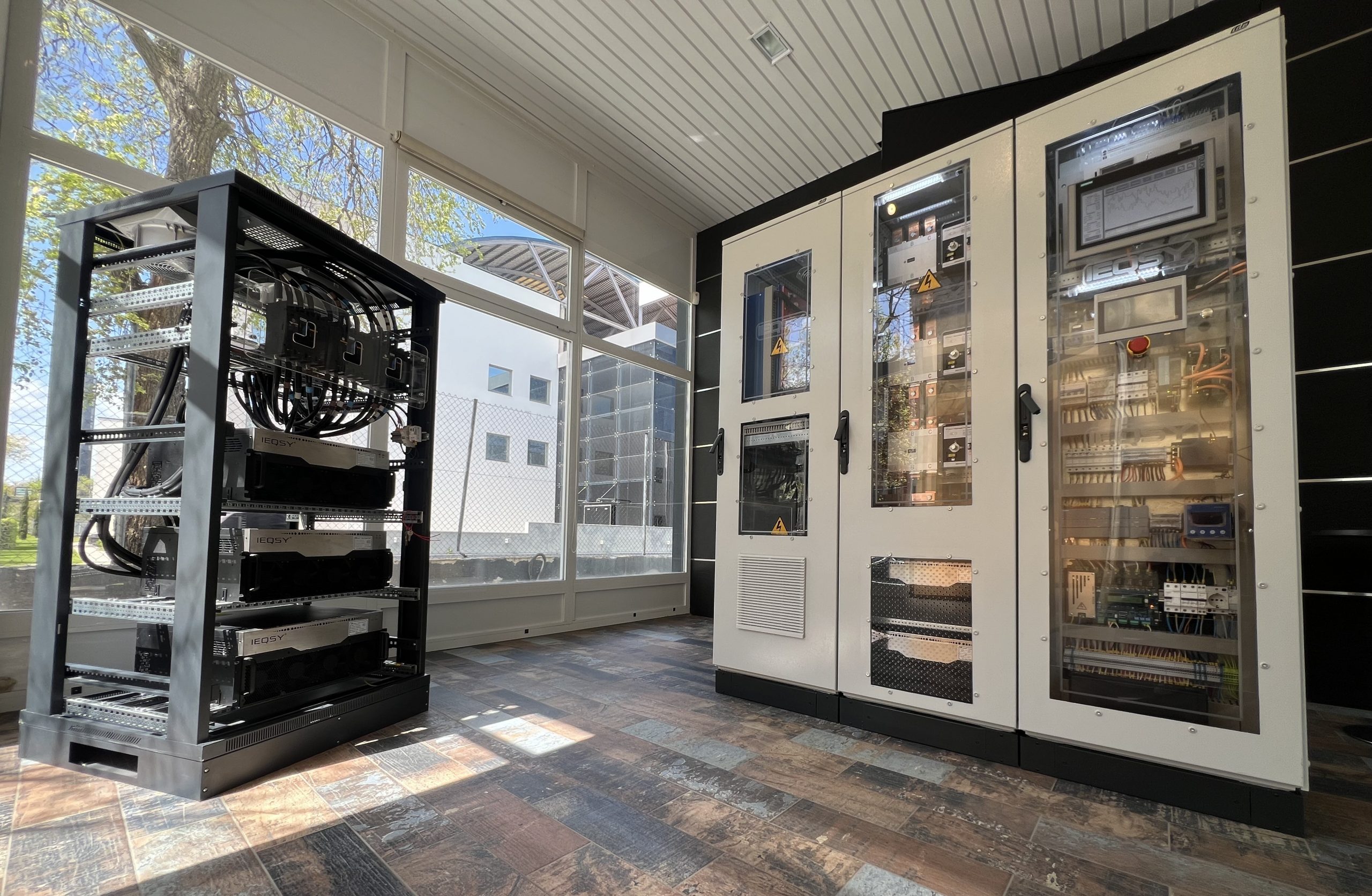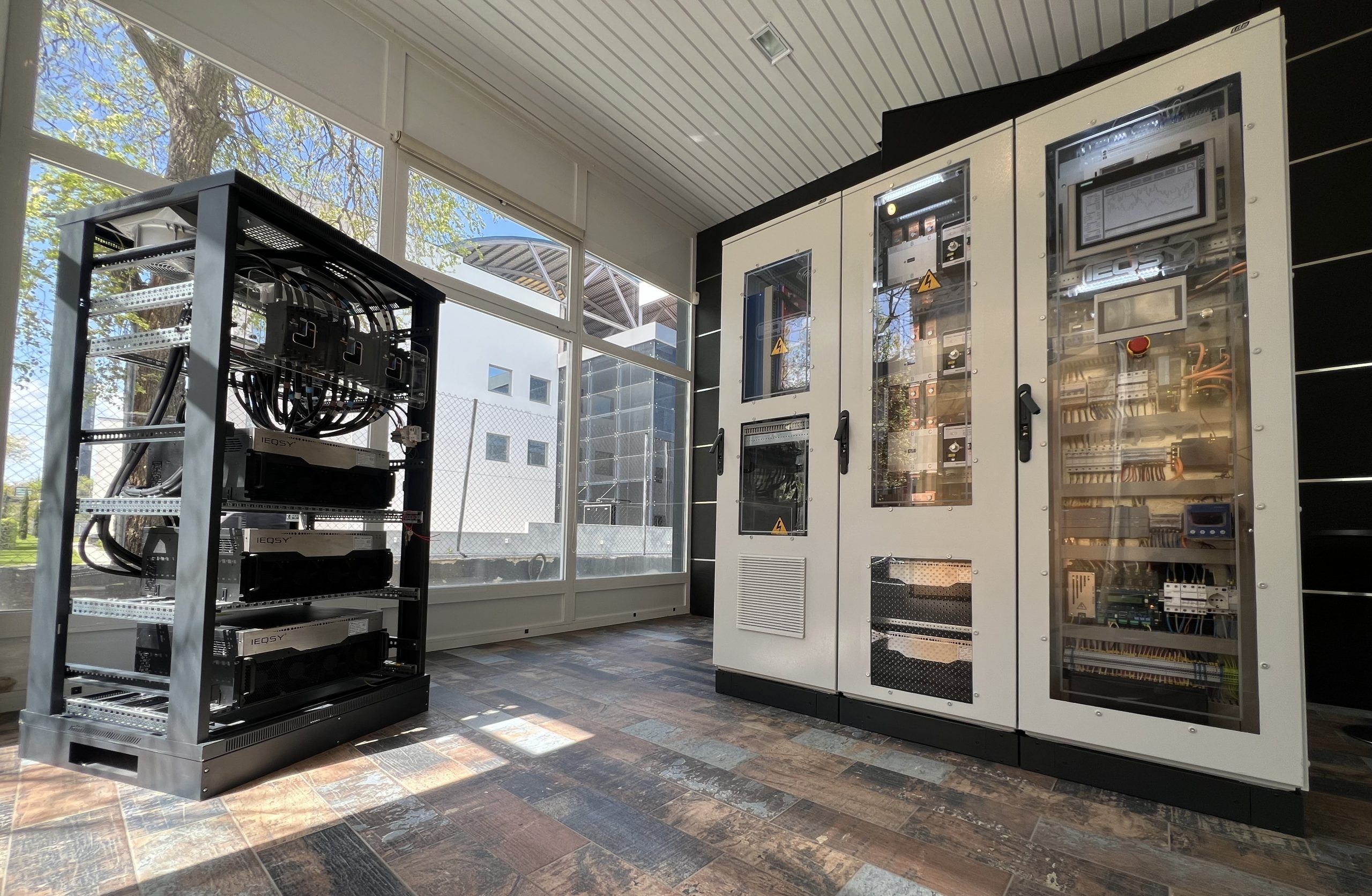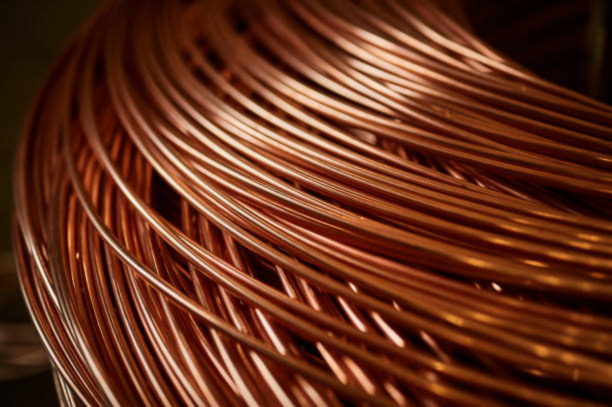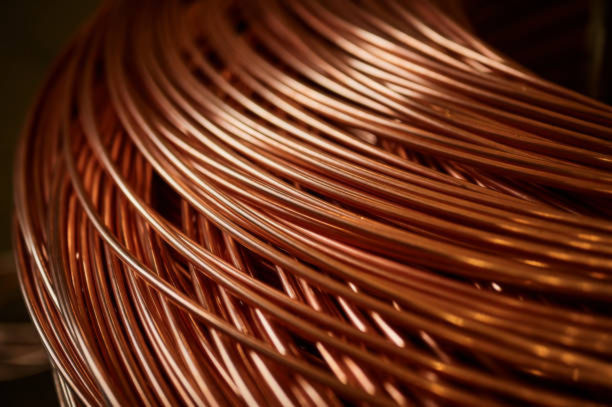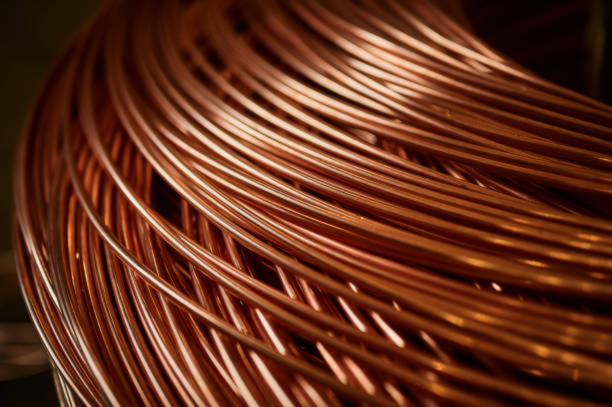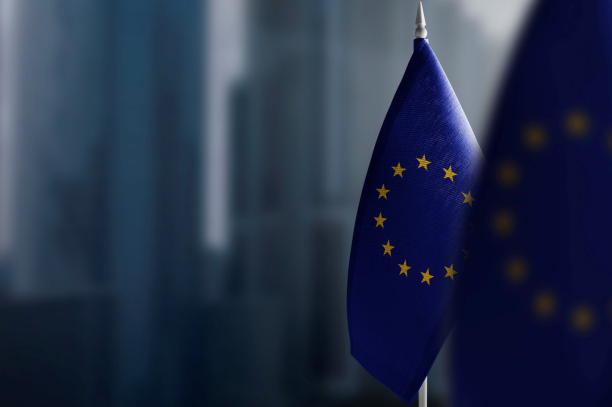[et_pb_section fb_built=»1″ _builder_version=»4.25.1″ _module_preset=»default» global_colors_info=»{}»][et_pb_row _builder_version=»4.25.1″ _module_preset=»default» global_colors_info=»{}»][et_pb_column type=»4_4″ _builder_version=»4.25.1″ _module_preset=»default» global_colors_info=»{}»][et_pb_text _builder_version=»4.25.1″ _module_preset=»default» hover_enabled=»0″ global_colors_info=»{}» sticky_enabled=»0″]
We are thrilled to have participated in EXPONOR CHILE 2024, a significant international event showcasing the latest technologies and innovations for the mining and energy industry. At IEQSY, we introduced the world’s premier energy efficiency system.
We collaborated with Copese, AMinerals, Glencore, and Sierragorda, and we were able to discuss their primary concerns regarding the electrical quality within a mining operation. Subpar electrical quality impacts safety first and foremost, followed by productivity. The main issues identified were:
- Safety Risk: Electrical malfunctions can pose a hazard to personnel. For instance, inadequate lighting and ventilation can compromise safety in work areas.
- Supply Interruptions: Micro-outages, overloads, or failures in protective equipment can lead to partial or total power outages.
- Equipment and Machinery Damage: Resonances and overloads can damage critical equipment, such as pumps, fans, or conveyor systems. This can halt production and incur additional repair costs.
- Productivity Loss: As the number of failures increases, productivity decreases, and delivery times may be delayed.
- Additional Costs: Repairs, equipment replacements, and production losses generate additional costs for the mining company.
[/et_pb_text][/et_pb_column][/et_pb_row][/et_pb_section][et_pb_section fb_built=»1″ _builder_version=»4.25.1″ _module_preset=»default» global_colors_info=»{}»][et_pb_row column_structure=»1_2,1_2″ _builder_version=»4.25.1″ _module_preset=»default» global_colors_info=»{}»][et_pb_column type=»1_2″ _builder_version=»4.25.1″ _module_preset=»default» global_colors_info=»{}»][et_pb_image src=»https://ieqsy.com/wp-content/uploads/2024/06/Exponor-Chile-2024-IEQSY-Dominion.jpg» alt=»Evento de minería y energía en Antofagasta, Chile» title_text=»Exponor Chile 2024 – IEQSY – Dominion» _builder_version=»4.25.1″ _module_preset=»default» global_colors_info=»{}»][/et_pb_image][/et_pb_column][et_pb_column type=»1_2″ _builder_version=»4.25.1″ _module_preset=»default» global_colors_info=»{}»][et_pb_image src=»https://ieqsy.com/wp-content/uploads/2024/06/Exponor-Chile-2024-IEQSY-Domion-Stand-scaled.jpg» alt=»Exponor Chile 2024 – IEQSY – Dominion» title_text=»Exponor Chile 2024 – IEQSY – Domion – Stand» _builder_version=»4.25.1″ _module_preset=»default» global_colors_info=»{}»][/et_pb_image][/et_pb_column][/et_pb_row][/et_pb_section][et_pb_section fb_built=»1″ _builder_version=»4.25.1″ _module_preset=»default» global_colors_info=»{}»][et_pb_row _builder_version=»4.25.1″ _module_preset=»default» global_colors_info=»{}»][et_pb_column type=»4_4″ _builder_version=»4.25.1″ _module_preset=»default» global_colors_info=»{}»][et_pb_text _builder_version=»4.25.1″ _module_preset=»default» custom_margin=»0px||||false|false» custom_padding=»||0px||false|false» global_colors_info=»{}»]
Following the meeting, we initiated the homologation process for our system, a critical step in expanding our presence in new markets. In Chile and across the Americas, we are represented by Dominion Group, who assist us in delivering our energy efficiency solutions to various industries.
The electrical quality in Chile presents numerous opportunities for improvement. Therefore, we believe that the implementation of the IEQSY-PQS (Power Quality Supply), IEQSY-SEW (Security Energy Wave), and IEQSY-VIEW systems are the optimal solutions to enhance the sustainability, efficiency, and productivity of Chilean companies.
Before arriving in Antofagasta, we were in Santiago de Chile. Alongside Dominion, we visited an Entel facility and the Coexpan factory. Additionally, we received valuable feedback on power quality in Chilean hospitals, where the urgent need to improve power quality in critical units and secondary panels was highlighted, as certain electrical failures can result in losses amounting to millions of dollars.
[/et_pb_text][/et_pb_column][/et_pb_row][/et_pb_section][et_pb_section fb_built=»1″ _builder_version=»4.25.1″ _module_preset=»default» global_colors_info=»{}»][et_pb_row column_structure=»1_2,1_2″ _builder_version=»4.25.1″ _module_preset=»default» global_colors_info=»{}»][et_pb_column type=»1_2″ _builder_version=»4.25.1″ _module_preset=»default» global_colors_info=»{}»][et_pb_image src=»https://ieqsy.com/wp-content/uploads/2024/06/Exponor-Chile-2024-IEQSY-Dominion-Catalogos-Merchandising-scaled.jpg» alt=»Exponor Chile 2024 – IEQSY – Dominion» title_text=»Exponor Chile 2024 – IEQSY – Dominion – Catálogos – Merchandising» _builder_version=»4.25.1″ _module_preset=»default» global_colors_info=»{}»][/et_pb_image][/et_pb_column][et_pb_column type=»1_2″ _builder_version=»4.25.1″ _module_preset=»default» global_colors_info=»{}»][et_pb_image src=»https://ieqsy.com/wp-content/uploads/2024/06/Exponor-Chile-2024-IEQSY-Domion-Stand2.jpg» alt=»Exponor Chile 2024 – IEQSY – Dominion» title_text=»Exponor Chile 2024 – IEQSY – Domion – Stand2″ _builder_version=»4.25.1″ _module_preset=»default» global_colors_info=»{}»][/et_pb_image][/et_pb_column][/et_pb_row][/et_pb_section][et_pb_section fb_built=»1″ _builder_version=»4.25.1″ _module_preset=»default» global_colors_info=»{}»][et_pb_row _builder_version=»4.25.1″ _module_preset=»default» global_colors_info=»{}»][et_pb_column type=»4_4″ _builder_version=»4.25.1″ _module_preset=»default» global_colors_info=»{}»][et_pb_text _builder_version=»4.25.1″ _module_preset=»default» global_colors_info=»{}»]
We leave you with some photos of our stay and a brief video of the talk we delivered!
More information can be found at the following link: https://exponor.cl/
[/et_pb_text][/et_pb_column][/et_pb_row][/et_pb_section][et_pb_section fb_built=»1″ _builder_version=»4.25.1″ _module_preset=»default» global_colors_info=»{}»][et_pb_row _builder_version=»4.25.1″ _module_preset=»default» global_colors_info=»{}»][et_pb_column type=»4_4″ _builder_version=»4.25.1″ _module_preset=»default» global_colors_info=»{}»][ba_video_popup image=»https://ieqsy.com/wp-content/uploads/2024/06/Exponor-Chile-2024-IEQSY-Presentacion.jpg» image_alt=»IEQSY VIEW – APP» icon=»4″ type=»video» video=»https://ieqsy.com/wp-content/uploads/2024/06/Conferencia-Octavio-Alaex-Perez-CEO-de-IEQSY-Feria-EXPONOR-CHILE-2024.mp4″ img_height=»400px» icon_color=»gcid-5f109949-2ebe-46e9-95fb-967c1bce6c15″ module_class=»block-popup-custom» _builder_version=»4.25.1″ _module_preset=»default» custom_css_free_form=».block-popup-custom img{|| object-fit:contain;||}||.dtq-modal{|| max-width:800px;||}||.dtq-video-popup a{|| display:contents;||}||.dtq-video-popup-trigger{|| display:flex !important;||}||.mfp-wrap{|| z-index:999999;||}||» locked=»off» global_colors_info=»{%22gcid-5f109949-2ebe-46e9-95fb-967c1bce6c15%22:%91%22icon_color%22%93}»][/ba_video_popup][/et_pb_column][/et_pb_row][/et_pb_section]

